Pure Ketamine Crystal Type S
$20.00 – $250.00Price range: $20.00 through $250.00
Moon Haus offers the purest Type-S K on the market! Delivered right to your doorstep!
Buy Ketamine Online in Canada
Also bought together
this items could be interested for you
Pure Ketamine Crystal Type S (100MG, 500MG, 1G, 5G) – Psychedelic Medicines Canada
Psychedelic Medicines Canada – Pure Ketamine Crystal, Pure MDMA, Premium Magic Mushrooms.
Buy Ketamine Online in Canada
Moon Haus offers the purest K on the market! Delivered right to your doorstep!
KETAMINE
Ketamine is a potentially prohibited substance that has harmful effects on the human system. Its use is vehemently disapproved by the law and if found in human possession, it is punishable by the law. However, it is an obvious fact that the use of illegal drugs exists, and neglecting to enlighten the public about the possible harmful effects of the use of these drugs could bring about grave consequences. For this purpose, this article has been created and organized to serve as a compass for those who consume this substance by ensuring they are safe while consuming it. Buy Ketamine online Canada by checking our website.
OVERVIEW
Ketamine is a well-known anesthetic agent which possesses strong dissociative and hallucinatory effects. Ketamine is often regarded as “The Club Drug” due to its hallucinatory properties. With recent discoveries, Ketamine has proven to be an effective therapy in the treatment of depression which has yielded mind-blowing results.
The use of Ketamine was endorsed by the FDA (Food and drug administration) last year and this has brought about the emergence and establishment of ketamine clinics all around the globe.
Ketamine is known for its rapid onset and strong efficacy. A survey which was conducted by the National Institute of Mental Health in the year 2006 discovered that 18 individuals who utilized the medication (Ketamine) reported a swift change in mood within a few hours. It should be noted that the mechanism of action of Ketamine is yet to be well-understood, however, scientists believe that this medicine can repair damaged synapses, or facilitate neuronal connections within the brain tissue, which became deteriorated as a result of stress and depression. Regardless of the listed benefits, ketamine remains a substance or drug which is under the strict supervision of the law in the United States and other countries across the globe.
What to expect when Ketamine is consumed depends on the doses.
When ketamine is administered at low doses, it causes hypoesthesia(partial loss of tactile sensation), tingling body sensations (especially in the hands, feet, and head), jerky movements, tachypnea(rapid breathing), and dizziness. The effects felt are immediately followed by a feeling of euphoria, peace with one’s self, dull visuals, and obscured or distorted vision. People who consume this drug may portray characters that point toward self-reflection and proper and profound acknowledgment of music.
At high doses, hallucination involves the major sense organs are involved. Visual, auditory, and gustatory (taste) sensory perceptions are grossly distorted. Some individuals report feeling, or experiencing a metallic taste in the mouth which lingers. Hallucinations may remarkably seem real including conversations with people who do not exist.
At relatively higher doses, self-awareness and self-consciousness of the immediate physical environment are not attainable. Individuals who have consumed a high dosage of Ketamine document have to experience Out-of-body or near-death syndrome, such as having to recall explicit inner life experiences and a disoriented sense of time, place, and person. A high dose starts at approximately 1.5 mg/kg. Some adverse effects are experienced by people who make use of Ketamine. To learn more, visit our website. These effects include paranoia, nausea, loss of memory, and loss of personal identity which often occur and may persist after frequent use.
EFFECTS
Pharmacology
Ketamine is a water-soluble Phenylcyclodine (PCP) derivative. As a molecule with chiral centers, it contains two enantiomers: an S(+) isomer often regarded as esketamine,” and an R(-) isomer known as “ketamine.” In clinical settings, it is available in liquid form or a powdery form as ketamine hydrochloride, and this is administered intravenously(directly into the veins). Ketamine is sold under the trade name called Ketalar. One of the enantiomers of Ketamine-Esketamine, varies slightly in its molecular makeup. It was endorsed by the FDA in 2019 and is been sold under the trademark name “Spravato”. Its route of administration is through the mucus membranes of the nostrils and it comes in the form of nasal sprays.
Receptor binding
Ketamine exhibits an uncompetitive antagonistic relationship with NMDA (N-methyl-D-aspartate) receptors. This interaction usually has inhibitory effects in the transmission of electrical impulses traveling between the brain and spinal column. The blockade of electrical impulses and neuronal synapses is what gives rise to the anaesthetic and analgesic effects. Ketamine also interacts with opioid receptors serving as an agonist and serving as an inhibitor of monoamine oxidase cholinergic, purinergic, and adrenoreceptor systems. Although its inhibitory effect depends on the dose of ketamine administered.
Safety and Toxicity
Ketamine has been discovered to pose no harm to people who use the drug seldomly. However, continuous use of this drug gives rise to possible chronic degeneration of neurons. Experiments were carried out on monkeys. It was discovered that the monkeys (rhesus monkeys) who were exposed to prolonged intravenous administration of this drug (over 9 or 24 hours) became brain dead. A relatable effect was seen in neonatal rats.
It should be noted that when the drug was administered intravenously in the monkeys for a shorter period of 3 hours, no adverse effects were seen.
A survey was conducted and it indicated a significant level of cognitive impairment affecting memory, thoughts including speech in people who use the drug regularly. However, people who used the drug seldomly (people who consume ketamine once or twice a month) showed no records of cognitive impairment. Do you want to buy Ketamine online? Explore here!
Frequent users of Ketamine experience schizotypal symptoms which include delusion (grandiose delusion), superstitious ideation, dissociation, and flashbacks. Symptoms persist in some users. Pain that originates from the bladder is one of the presenting complaints among individuals who use Ketamine frequently. This pain is often associated with a decreased/drastic reduction in bladder volume, urinary incontinence, hematuria(presence of blood in the urine), and inflammation of the urinary bladder. A lot of studies are being conducted to understand the correlation between ketamine use and urological problems. In some cases, due to the urological problems and the pain which is often felt; it could result in surgical removal of the bladder. Although it is regarded as the last resort. Click here to know more
According to statistics, there were approximately 529 ketamine-related emergency visits in the United States when being held in comparison to 36,719 cases of Phenylcyclidine (PCP) and a total of 973,591 for any illegal drug. This was documented in the year 2009. 12 ketamine-related deaths were recorded globally
between the period of 1987 and 2000, and only 3 cases involved ketamine alone. The cause of death in each case was linked to an overdose by injection. The death that is caused by Ketamine is most often associated with the interaction of ketamine with other drugs/substances leading to respiratory distress and cardiac arrest.
Interactions with other substances
Ongoing research is still being conducted on the interaction of Ketamine with other drugs so the database on these drug interactions seems to be very limited, or not well established. So, it is strongly advised not to mix two(2) substances whether the reaction is good or bad.
Positive interactions:
Psilocybin: Psilocybin can also be called Magic mushroom. A lot of persons who use these drugs have testified that the mixture of psilocybin and ketamine gives them the feeling of ecstasy when combined. Out-of-body experiences (the cloud 9 sensations)are common, and ketamine helps in abating anxiety and brings on a sense of pleasure.
LSD: Lysergic acid diethylamide (LSD) can heighten ketamine’s effect in the human body by inducing out-of-body experiences, which is considered to be a significant aspect of its therapeutic use. It has been recorded that little amounts of ketamine inhibit the hallucinatory effects of LSD and limits the drug-induced reverie seen in the consumption of LSD.
Neutral interactions:
Cannabis: No adverse effect has been documented for the combination/mixture of Cannabis and Ketamine. Ketamine magnifies some cannabis effects, especially closed-eye visuals.
Caffeine: Caffeine mixed with Ketamine poses no problem or threat.
Negative interactions:
Some negative interactions have been noted when the following substances are combined with Ketamine.
Such substances that have negative effects when combined with Ketamine are :
•Opioids
•Barbiturates (amobarbital (Amytal), secobarbital, phenobarbital)
•Benzodiazepines (Xanax, Klonopin, Ativan)
•Zolpidem (Ambien)
Are you in search of a guide when sourcing safe psychoactive substances? To buy Ketamine online Canada, buy here.
Explore different types of psychedelic therapies, their uses and effect, and various methods through which they can be applied to guarantee safety.
The most outstanding theory is that this medication (Ketamine) stimulates the transmission of synapses and faster conductivity of impulses which effectively restructures the brain. This function differs significantly from other existing antidepressants.
Ketamine not only acts upon monoamine neurotransmitters such as serotonin or dopamine, but it also acts on glutamate-which is the most common chemical neurotransmitter in the brain. Glutamate plays an important role in the synapses and neurons involved in learning and memory, which is why scientists believe that neuroplasticity could be pivotal to ketamine’s antidepressant effects.
Risks
Ketamine is taken into account as a relatively safe drug when considered in medical settings. In contrast to other anesthetic medications, the circulatory system is not depressed and the protective airway reflex is not affected by ketamine. This makes ketamine a safer option as an anesthetic.
However, there are certain things to look out for. Ketamine is capable of increasing blood pressure and intracranial pressure or pressure in the brain. This simply implies that ketamine should be avoided in cases of brain swelling, glaucoma, and brain lesions or tumors. Caution should be exercised for people with coronary artery disease, thyroid disease, high blood pressure, aneurysms, and alcoholism when using ketamine.
Prolonged usage of ketamine can also cause issues in the creation of new memories, short-term memory, visual memory,
accessing old memories, and also issues of verbal recall such as forgetting words, conversations, and names. It can seriously cause damage to organ systems, most especially the bladder, kidneys, and heart. Respiratory distress, seizures, and rapid heart rate may be seen in people who take heavy doses of ketamine.
THERAPEUTIC USE
One of the most important features of esketamine—and one that gives it more advantage than other traditional antidepressants—is its extremely rapid onset. Within 4-72 hours the symptoms of depression tend to improve compared to the gradual improvement of 6-12 weeks waiting time for other medications.
While it may not apply to everyone, the success rate of ketamine is 85% which is almost double the success rate of other traditional antidepressants (45%). For patients with treatment-resistant depression, it is seen to be highly effective even if they have had persistent symptoms for decades without relief. Furthermore, it shows great effect in reliably and rapidly abolishing suicidal thoughts, thereby making ketamine the very first emergency “anti-suicide” drug. Ketamine antidepressants may last up to 30 days from a single dose when administered as an intranasal spray.
The effective dosage of ketamine is a highly essential but still under-researched aspect of ketamine treatment. It brings about numerous side effects (even at subanesthetic dosage levels), so administering the optimal quantity is important In patients with treatment-resistant depression, a recent study was conducted. The study tested four different dosage levels: 0.1, 0.2, 0.5, and 1 mg of intravenous ketamine per kg of body weight. They noticed that single doses of 0.5 and 1 mg/kg were notably more effective in reducing depression symptoms over three days than an active placebo.
However, the results after monitoring the patient for 30 days showed that there was “minimal evidence of meaningful therapeutic benefit after the 5th day”. At 1mg/kg, the effects of the drug lasted between 15 and 30 days, but the researchers noted that the effects were modest.
While some researchers wish for a non-psychedelic form of ketamine, others consider its psychedelic effects to be unique and crucial for treatment. For instance, Ketamine psychedelic therapy (KPT) takes advantage of the dissociative state of ketamine to tackle the underlying psychology of addiction. Companies like Moonhaus, which are opening ketamine clinics across Canada, believe that the psychedelic effects are paramount to their treatments.
Are you looking to buy Ketamine online? Do that here.
A study conducted in 1997 found that ketamine therapists were able to influence drug addicts and alcoholics with new memories and beliefs about substance abuse, creating a strong inner taboo to avoid relapse effectively. After one year of treatment, an approximation of 66% of patients with chronic alcohol remained sober, compared to just 24% of conventional treatments for chronic alcoholic patients.
Following treatment, KPT patients also came out strongly with positive self-images and values way better than before they started. One particular improvement was their newfound sense of meaning or purpose, which was similar to a spiritual or religious conversion.
Newer studies carried out on Ketamine has shown that the health benefits of Ketamine are as a result of its antagonism towards NMDA receptors, thereby making them unstable and also enhance the erasing of its memories from the drinkers. also activates the system associated with emotion, memory, and behavior (the limbic system) which suggests a strong interaction between the conscious and subconscious levels of the mind.
KPT can also help individuals who are addicts of heroin remain free from it after undergoing rehabilitation. Compared with those who received counseling alone, it was found out that persons who were given prompt and frequent sessions of KPT would be less likely to go back to using heroin thereafter.
For more than a decade (1985-1997) of administering KPT to patients, it was also found effective in the treatment of neurotic-reactive depression (i.e. depression which arises from specific events of life and circumstances) such as PTSD and avoidant personality disorder (social restraint, over-sensitivity, feelings of inadequacy, etc). Other psychotherapeutic applications of the dissociative effect of ketamine include ego-dissolution, regression, and group healing ceremonies. Would you like to buy Ketamine online? Visit our website.
PERSONAL GROWTH
Just like other psychoactive substances, ketamine can periodically result in a reduction of self-awareness which remarkably decreases one’s sense of self, although for a very short period. Many people who have consumed ketamine have narrated positive shifts in their perception or understanding which could be the result of ego dissolution as well as the neuroplasticity effect of ketamine.
John C. Lilly, M.D. who is a renowned physician, neuroscientist, and skilled psychoanalyst was very excited about what he called the “emergent state” of ketamine, also known as the “K-hole.” In this state, he said, time appears to be slow to the point that it appears insignificant, this makes it very easy to analyze and make appropriate judgments towards problems without being biased or sentimental, He described this state as a state where one objectively evaluates one’s ego, attitude, and inspirations with great ease. Lilly also proposed a practice he called “metaprogramming,” which entails exploring distinct personality traits while in this emergent state to see their consequences before deciding to adopt them for good. An increase in the level of compassion and human sensitivity has been associated with Ketamine as well as the ability to curtail the fear of death and panic attacks.
LEGALITY
Ketamine was authorized as a Schedule III non-narcotic substance under the Federal Controlled Substances Act in August 1999 After the enactment of this law, it gained so much popularity as ” the club drug”. In 2019, The FDA endorsed esketamine—(an enantiomer of ketamine) for the treatment of depression. Though this endorsement made it legalized, ketamine is nonetheless highly controlled. It is unlawful to have ketamine in the United States without a doctor’s prescription and people who violate this law on a first-time charge/basis are subjected to pay federal fines of up to $250,000 and /or do jail time (an average of three years in prison). Note: possession of ketamine in little quantities for individual/personal use makes it possible for that individual to be prosecuted at the state level. In the United Kingdom(UK), Ketamine is categorized under Class B substance, this class is where other substances like cannabis, codeine, and most amphetamines fall into. Possession is punishable by a period of five(5) years in prison.
Ketamine is also considered an illegal substance in Canada, Australia, and New Zealand. Most countries of the world including Brazil, limit the use of the drug for only veterinary purposes while other countries permit its use on humans only on prescription. In very few countries ketamine is sold over-the-counter. For more information about Ketamine, Visit our website.
HISTORY & STATS
During the year 1962, the substance Ketamine was produced to act a San anesthetic in the place of phenycyclidine, a man known as Calvin Stevens who came from Parke-Davis was the first to synthesize it in a renowned pharmaceuticals, which was one of the largest pharmaceutical company in the U.S. Initially known as CI-581. In 1964, the drug was tested on human prisoners, and the term “dissociative anesthetic” was used to describe its effects.
Around 1965, recreational use of ketamine began, and internationally became prevalent by the mid-1970s. During this period, psychedelic researchers such as Marcia Moore, Stanislavsky Grof, John C. Lilly, and D. M. Turner investigated ketamine’s psychotherapeutic potential. Vietnam veterans also used it with PTSD, as it was the anesthetic of choice in the field during the war. The drug was referred to as “Vitamin K” by Lilly and once took it straight for 100 days. Also, it is useful and integrative for therapy with LSD was founded by Grof.
Ketamine’s popularity in the 1980s moved to the rave culture of Ibiza and Goa. It was a less expensive alternative to another up-and-coming “club drug,” MDMA.
In 1981, the DEA gave out a notice of intention to position ketamine in Schedule III of the Controlled Substances Act, but the designation was not supported as there was a scarcity of evidence of actual abuse. In 1995, the drug was included in the agency’s “emerging drugs list” and in 1999 it was finally labeled Schedule III, making possession without a prescription illegal. As a result, it was often stolen from hospitals or smuggled from overseas.
Current use
Although it is controlled in most of the Western world, ketamine is used widely for medicinal as well as for the purpose of recreation. Several clinics have been opened for infusion of ketamine across the world, and its promising results as a treatment for depression are causing its medical popularity to rise.
Would you love to buy Ketamine online? Click here.
Medicinal use
Ketamine has withstood the test of time as a medical practice, thanks to its unique pharmacological properties and a progressive body of evidence of its clinical benefits. Curious about supporting your mental health through ketamine?
Ketamine’s potential has been shown through increasing research as a treatment for severe depression, and in the same vein, Ketamine is seeing a rise in acceptance and use.
Non-medicinal use
Also in the 2016’s drug survey that was carried out globally using about 100 thousand participants who ingested the psychedelic substance- Ketamine, it was found out that this substance was in the top 10 of drugs used illicitly. In global past-year prevalence, it had 6.72%—compared with 12.89% for LSD and 11.75% for psilocybin. In 2006, Ketamine was most likely used by people between the ages of 18 and 25 in the U.S., being at the same rate with phenycyclidine. It became known also that about 2.3 million persons in the ages of 12 and older might have taken Ketamine for at least once since they’ve been born. Also, about 203,000 population of people had used it in the past year. The rate of ketamine use between 2000 and 2011 among U.S. high school students steadily declined, never getting to more than 2.6%.
In the UK, Ketamine is reported to be around five times more prevalent than in the US. In 2013, statistics show a similar age bracket 20-24-year-olds as the most likely group to use it. It has also been noted as one of the most likely drugs to be used combined with other substances, with approximately 50% of UK users mixing it, mostly with alcohol. In China, one of Ketamine’s most prominent manufacturing centers, there has been a dramatic rise in Ketamine’s popularity. To an extent, this is due to its low cost of production.
MYTHS
Debunking the myths about Ketamine.
“Ketamine is a cat or horse tranquilizer and not favorable for human consumption.” This is a general misrepresentation by the media, this myth sells the idea that to the public the use of ketamine in humans is unorthodox. Ketamine is widely used in veterinary medicine, but it was originally designed for and experimented on humans. Currently, it is one of the most effective therapies used for treatment-resistant depression. It also stands out as one of the most reliable anesthetic agents. World Health Organization listed ketamine as one of two anesthetic substances that are injected when general anesthesia needs to be done. The WHO has a model list for essential medicines and ketamine is enlisted:
“Ketamine makes you psychotic”
Without a prior history of psychosis or mental illness in an individual, ketamine will not cause psychosis. The drug does elicit a dissociative state, which can cause confounding changes in perception. It should be noted that these effects are temporary and end shortly after the drug wears off.
“Ketamine is highly addictive”
Ketamine does not cause physical dependence, but some people become psychologically attached to it based on how good it makes them feel. However, in a supervised clinical setting, addiction has not been recorded. A cup of coffee is considered to be more addictive than ketamine
Some of the frequently asked questions:
-Where can I find legal ketamine clinics?
At Moonhaus, we support your quest to explore and experience ketamine legally. We have a list of verified and vetted legalized ketamine clinics along with skilled therapists who are always ready to walk you through every step of the way.
-Can ketamine be detected in a drug test?
Tests for the presence of Ketamine are occasionally not conducted, but they may be included in some extensive screens. Ketamine is chemically analogous to Phenylcylidine (PCP), it may also trigger a false positive.
The research was carried out and it was discovered that ketamine can be detected in hair strands for 4 months after a single dose.
After 48 hours of administration of the ketamine, it was discovered that ketamine was seen in the scalp samples collected with wet swabs. It can also be detected through urine samples since a single dose can stay as long as 48-96 hours in your system.
For individuals who frequently use Ketamine, a test for ketamine would detect its metabolite called Norketamine. Norketamine is a major metabolite that can be detected through urine or blood for up to 2 weeks
Can I test my ketamine to see if it is safe to take?
Testing your ketamine is a very good proactive step. There are reagent test kits from Bunk Police that can help identify adulterated substances and substitutes, which could save your life.
Methoxetamine (MXE), for instance, is very hazardous if it is being sold as ketamine. The Mandelin reagent helps to rule it out. This is done by simply placing little quantities of ketamine in a sterile test tube or on a sterile white ceramic surface and adding 2-4 drops of this reagent. Observe for color change and compare it against the supplied spectrum booklet.
Can ketamine cause psychological trauma?
Long-term cognitive impairment is one of the major adverse effects seen by infrequent users but people who rarely have it tend not to come down with cognitive impairment. In both cases ( Frequent users and occasional users) symptoms like loss of memory, distortion in perception, and delusion are experienced, but the effects wade off with time.
One might feel “crazy” or have the “cloud 9” moment in the dissociative state which is inferred as “acute psychosis” or “bad trips.”
How long does ketamine last?
Intranasal administration of ketamine can last for up to 1 hour. While the duration of action when ingested is approximately two hours.
-What does ketamine feel like?
Ketamine elicits a dissociative state as well as feelings of ecstasy, pain relief, and both visual and auditory hallucinations.
-What does ketamine look like?
Ketamine is a white powdery crystalline substance.
-Are there risks?
Overdose casualties are very rare, but there are certain risks involved. As a drug used in general anesthesia ketamine heavily impairs physical movement and due to this, people have been known to get severely injured. Ketamine is also known to have analgesic effects so some injuries may go unnoticed and maybe left untreated. Long-term health risks are attributed to frequent use.
-What is the safest way to take ketamine?
When a survey was conducted, statistics showed that most users prefer intramuscular administration of Ketamine compared to sniffing the powdery substance into the nostrils. Users who did sniff in the ketamine complained of blocked nostrils and teary eyes. Injecting ketamine into your body is very optional. It doesn’t hinder the effect of the drug.
A caveat of intramuscular administration of ketamine injection is muscle pain, especially with lower gauge needles. Intravenous injection rarely occurs among recreational users, likewise ingesting the drug orally because of its unpleasant taste.
-Can I use ketamine to microdose?
Microdosing is the intake of minute quantities of psychoactive drugs with the belief that it would aid productivity/creativity.
A very quick elevation of mood has been noticed when sub-perceptual doses of 0.2mg/kg were taken, especially in patients suffering from depression. Ketamine is not considered safe for microdosing.
For further information on microdosing with ketamine or to buy Ketamine online, Visit our website.
-Does ketamine produce tolerance?
The body tends to adapt to the effects of ketamine over time (could be weeks or days) thereby building tolerance. Tolerance build-up is seen among regular users.
-Is Ketamine addictive?
Taking ketamine could become a psychological habit if it is available. The risk for physical addiction is potentially very low. However, it is advised that personal boundaries be set to avoid the habitual intake of ketamine.
-What are the side effects of ketamine?
Common side effects experienced are Tachycardia(increased heart rate) and increased blood pressure, disorientation, dissociation, lack of coordination, nausea, vomiting hallucinations, flashbacks, and essential tremor disorder.
Some side effects that rarely occur include Bradycardia(decreased heart rate), decreased blood pressure, seizures, and spasms(contraction) of the larynx which can lead to suffocation.
When high doses of ketamine are taken, the following side effects can be seen: angina, blood pressure that fluctuates, coma, arrhythmia, fever, amnesia, terror hallucinations, anxiety, and severe panic, depression of the centres associated with respiration, particularly if combined with substances that act as CNS depressors, muscle contractions.
A severe adverse effect of chronic ketamine abuse is kidney toxicity.
Can I overdose on ketamine?
The number of death recorded from ketamine overdose is quite negligible because the chances of death occurring is quite slim. Settings where the psychoactive substance like Ketamine is taken happened to be frequently supportive, in sense that they promote a simultaneous ingestion of the substance, one thing is sure to be consequential, and that’s the fact that, the result is always dreadful. The potency of ketamine is high when compared to cocaine. This is one of the reasons why missing is not acceptable.
Can I mix it with other drugs?
Ketamine should never be consumed along with medications that are known to depress breathing. These include alcohol, Gamma-hydroxybutyric acid(GHB), opioids, and tramadol. The combination of ketamine with these drugs increases the risk of unconsciousness and aspiration (e.g. choking on your vomit). Ketamine when combined with Lysergic acid diethylamide(LSD), Cannabis appears to be safe for consumption. However, combinations are generally advised against.
Learn more on combinations that are safe and not safe with Ketamine.
Can I get a prescription for ketamine?
Obtaining a prescription for Ketamine from your doctor to treat your depression is possible depending on the country you live in.
OUR MISSION
The sole purpose of our existence is to share trusted, validated research-based content that helps you feel safe, supported, and empowered in your journey through the path of self-discovery. With that being said, we would like to emphasize the fact that we do not offer medical advice either in any form to support illegal activities. At Moonhaus, we are saddled with the responsibility of trust placed on us by our community and we do not take this privilege lightly.
We advise that you talk to a health care provider if you have any medical concerns and do not forget to always exercise caution.
| Quantity | 100MG, 500MG, 1G, 5G |
|---|
16 reviews for Pure Ketamine Crystal Type S
Add a review Cancel reply
Related products
Medicine
Medicine
Edibles

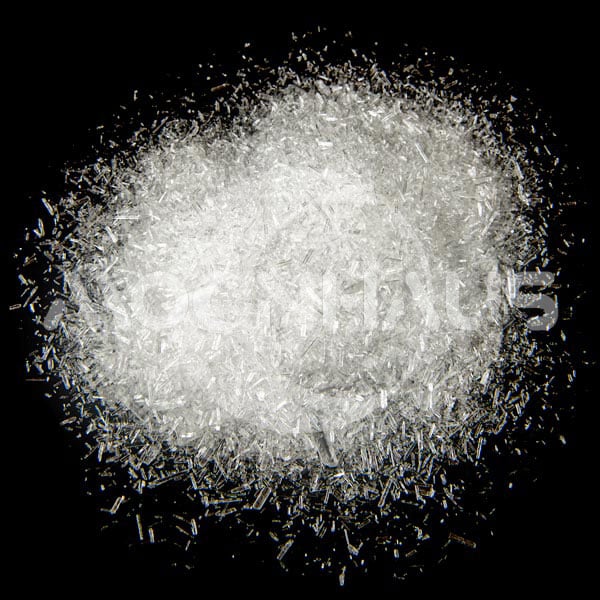

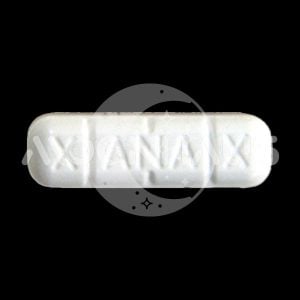
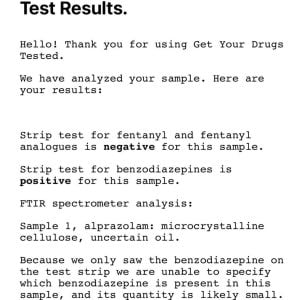
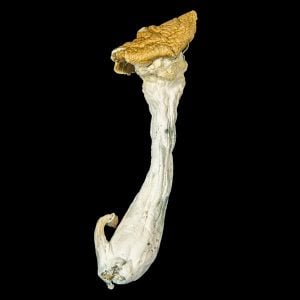
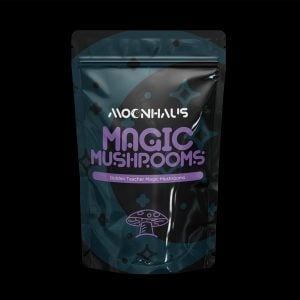

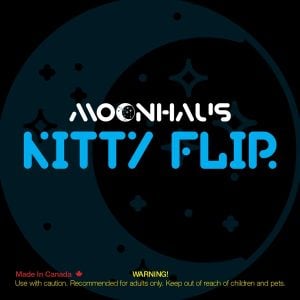
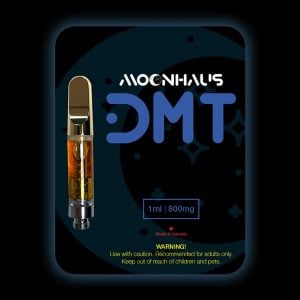
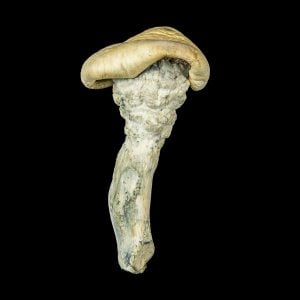
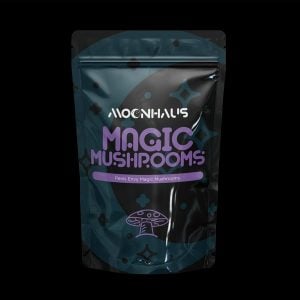
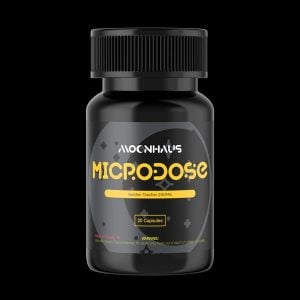

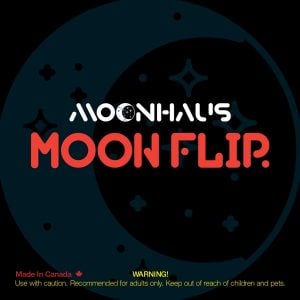
tippman_98 (verified owner) –
Reliable source if this is the sort of thing you are into. Please use responsibly, this is a potent drug that can easily manifest negative reactions if overdone.
DoubleU (verified owner) –
It’s pure ket, but there is a large community that thinks moonhaus is a scam, fix your customer service and processing,
Cheers!
sorenarduini1 (verified owner) –
It is really good
WIZZ (verified owner) –
Legit buisness, legit substances.
WIZZ (verified owner) –
high quality, wonky a*s sh*t. moonhaus is a legit buisness with legit substaces.
WIZZ (verified owner) –
high quality, hella wonky.
chad_linton (verified owner) –
Used in small doses, this can treat PTSD flare ups. Use responsibly though friends.
Tim Too (verified owner) –
Better then others I’ve tried. Usually not a fan but this is great
Isaac –
Discreet shipping and quick delivery make it a highly recommended option for regular users.
JandJ (verified owner) –
Mmmmmmm
Isabelle –
Pure Ketamine Crystal was exactly what I expected—clean and potent. Fast shipping and discreet packaging. Highly recommend!
Rachel –
This ketamine crystal was pure and potent. Delivered exactly what I needed. Fast shipping and discreet packaging too!
lily –
The Pure Ketamine Crystal was top-notch—clean, potent, and exactly as described
Kane –
Excellent Ket. 1.5 mg was wayyy to much. You will be out of your body and deep in space and when you come back the only thing u can liken it to is being reborn. Brought into this world. Try a .25 and work your way up. Be careful be cautious. A wise old psychonaut once said You can always add more , but you can’t take any away.
Cosmic Castaway (verified owner) –
Moonhaus Ketamine and LSD is FUCKING AMAZING! I haven’t ordered much ketamine here but it’s the strongest I’ve had. 2 small lines and I didn’t know what the fuck I was doing, who I was or where I was. Last night I took 1.5 tabs and it felt like much more, I like acid much more after my experience last night but I love everything on this site
Harrison Cavallin (verified owner) –
Probably the best quality Ketamine HCL crystal I’ve came across in years. No joke. A++